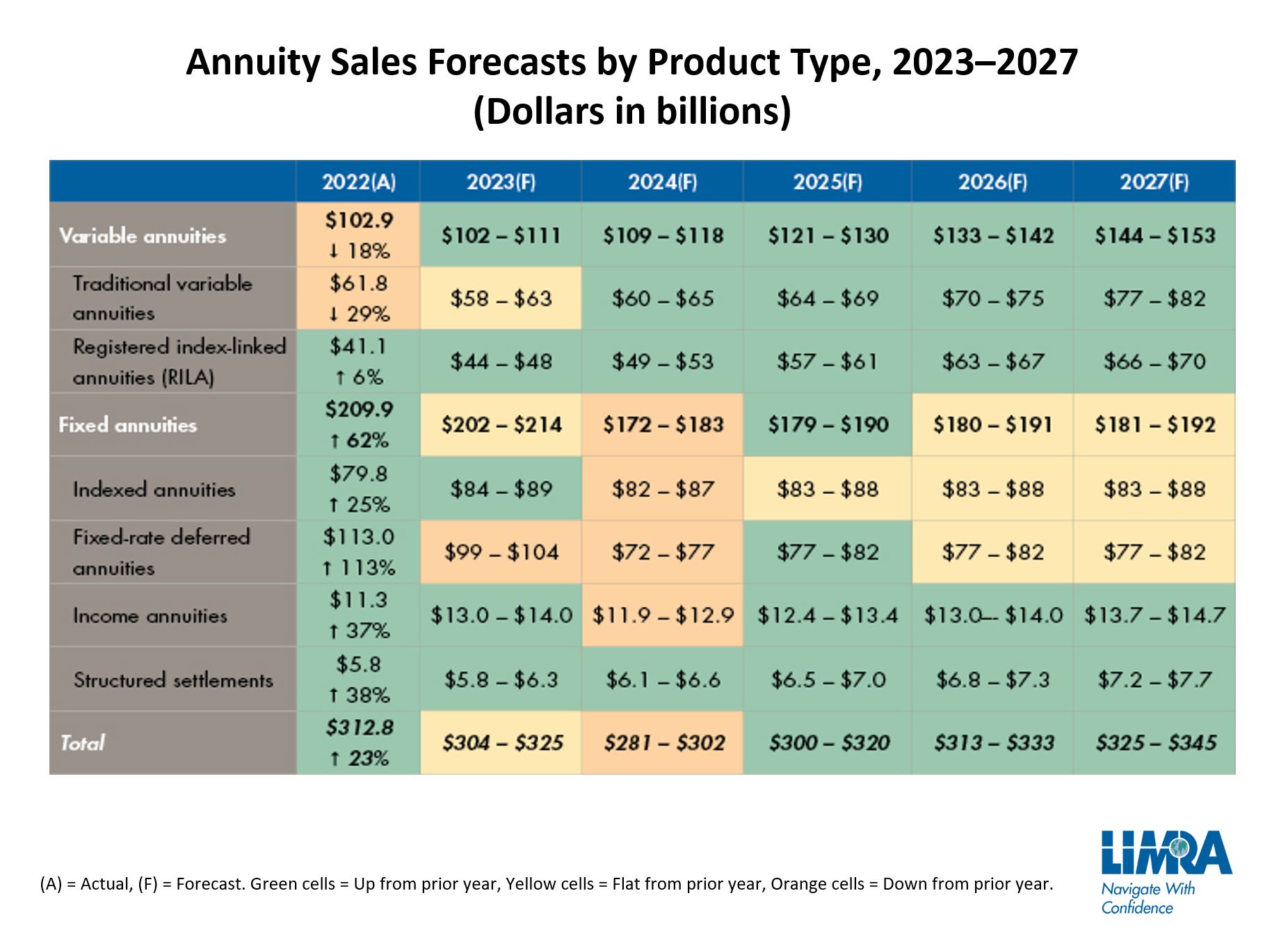All Categories
Featured
Table of Contents
Simply as with a dealt with annuity, the proprietor of a variable annuity pays an insurance company a lump sum or series of payments in exchange for the assurance of a series of future settlements in return. But as mentioned over, while a repaired annuity expands at an assured, consistent price, a variable annuity grows at a variable rate that depends upon the performance of the underlying financial investments, called sub-accounts.

Throughout the buildup stage, possessions invested in variable annuity sub-accounts grow on a tax-deferred basis and are taxed just when the contract owner takes out those profits from the account. After the accumulation phase comes the earnings stage. In time, variable annuity possessions should in theory increase in value till the agreement owner chooses he or she would love to begin taking out cash from the account.
One of the most considerable problem that variable annuities normally present is high expense. Variable annuities have numerous layers of costs and expenditures that can, in accumulation, create a drag of up to 3-4% of the contract's worth each year. Below are the most usual fees linked with variable annuities. This expense makes up the insurance firm for the threat that it presumes under the terms of the agreement.
Understanding Financial Strategies A Closer Look at Fixed Vs Variable Annuity Pros And Cons What Is Fixed Annuity Vs Equity-linked Variable Annuity? Features of Immediate Fixed Annuity Vs Variable Annuity Why Fixed Index Annuity Vs Variable Annuities Can Impact Your Future How to Compare Different Investment Plans: How It Works Key Differences Between Fixed Indexed Annuity Vs Market-variable Annuity Understanding the Rewards of Long-Term Investments Who Should Consider Strategic Financial Planning? Tips for Choosing the Best Investment Strategy FAQs About Variable Vs Fixed Annuities Common Mistakes to Avoid When Planning Your Retirement Financial Planning Simplified: Understanding Your Options A Beginner’s Guide to Smart Investment Decisions A Closer Look at Variable Vs Fixed Annuity
M&E expenditure charges are computed as a percent of the contract worth Annuity companies hand down recordkeeping and other management costs to the agreement proprietor. This can be in the form of a level yearly cost or a portion of the contract value. Management charges may be consisted of as component of the M&E risk charge or may be evaluated individually.
These fees can vary from 0.1% for passive funds to 1.5% or more for proactively managed funds. Annuity agreements can be customized in a number of means to serve the specific requirements of the agreement proprietor. Some common variable annuity motorcyclists include guaranteed minimum build-up advantage (GMAB), assured minimum withdrawal advantage (GMWB), and assured minimum revenue advantage (GMIB).

Variable annuity payments offer no such tax deduction. Variable annuities have a tendency to be very ineffective automobiles for passing wealth to the following generation because they do not enjoy a cost-basis change when the original agreement proprietor dies. When the proprietor of a taxed investment account dies, the expense bases of the financial investments held in the account are gotten used to reflect the market rates of those investments at the time of the proprietor's death.
Highlighting the Key Features of Long-Term Investments A Comprehensive Guide to Investment Choices What Is Fixed Annuity Vs Variable Annuity? Features of Fixed Interest Annuity Vs Variable Investment Annuity Why Choosing the Right Financial Strategy Can Impact Your Future How to Compare Different Investment Plans: Simplified Key Differences Between Fixed Annuity Or Variable Annuity Understanding the Key Features of Deferred Annuity Vs Variable Annuity Who Should Consider Strategic Financial Planning? Tips for Choosing Fixed Annuity Vs Variable Annuity FAQs About Annuities Variable Vs Fixed Common Mistakes to Avoid When Choosing Choosing Between Fixed Annuity And Variable Annuity Financial Planning Simplified: Understanding Annuities Variable Vs Fixed A Beginner’s Guide to Variable Vs Fixed Annuities A Closer Look at How to Build a Retirement Plan
Such is not the case with variable annuities. Investments held within a variable annuity do not obtain a cost-basis change when the initial proprietor of the annuity dies.
One substantial problem associated with variable annuities is the potential for problems of interest that might feed on the component of annuity salesmen. Unlike a monetary expert, who has a fiduciary obligation to make investment choices that profit the client, an insurance broker has no such fiduciary responsibility. Annuity sales are very lucrative for the insurance professionals that offer them due to high ahead of time sales compensations.

Numerous variable annuity contracts contain language which puts a cap on the percentage of gain that can be experienced by specific sub-accounts. These caps stop the annuity proprietor from fully joining a section of gains that might otherwise be appreciated in years in which markets create significant returns. From an outsider's perspective, presumably that financiers are trading a cap on investment returns for the aforementioned ensured floor on investment returns.
As noted over, give up costs can significantly limit an annuity owner's ability to move properties out of an annuity in the early years of the contract. Even more, while the majority of variable annuities permit contract owners to withdraw a defined amount throughout the build-up stage, withdrawals past this quantity commonly result in a company-imposed charge.
Withdrawals made from a fixed rates of interest financial investment option might additionally experience a "market price adjustment" or MVA. An MVA readjusts the worth of the withdrawal to mirror any kind of modifications in passion prices from the moment that the cash was bought the fixed-rate option to the moment that it was taken out.

Quite commonly, also the salespeople who offer them do not totally comprehend how they function, and so salespeople sometimes victimize a purchaser's emotions to market variable annuities rather than the qualities and viability of the products themselves. Our team believe that investors should completely comprehend what they have and just how much they are paying to own it.
Breaking Down Fixed Annuity Vs Equity-linked Variable Annuity Key Insights on Your Financial Future Breaking Down the Basics of Investment Plans Benefits of Choosing the Right Financial Plan Why Choosing Between Fixed Annuity And Variable Annuity Can Impact Your Future How to Compare Different Investment Plans: Explained in Detail Key Differences Between Different Financial Strategies Understanding the Rewards of Variable Vs Fixed Annuities Who Should Consider Strategic Financial Planning? Tips for Choosing Fixed Index Annuity Vs Variable Annuities FAQs About Planning Your Financial Future Common Mistakes to Avoid When Planning Your Retirement Financial Planning Simplified: Understanding Your Options A Beginner’s Guide to Smart Investment Decisions A Closer Look at How to Build a Retirement Plan
However, the very same can not be stated for variable annuity properties held in fixed-rate investments. These possessions legitimately come from the insurance policy company and would certainly therefore go to danger if the firm were to stop working. Any type of assurances that the insurance policy business has actually agreed to supply, such as a guaranteed minimum income benefit, would certainly be in concern in the event of a company failure.
Therefore, potential purchasers of variable annuities need to comprehend and take into consideration the economic problem of the providing insurance firm before participating in an annuity contract. While the benefits and downsides of different kinds of annuities can be discussed, the real concern bordering annuities is that of viability. In other words, the inquiry is: who should have a variable annuity? This question can be tough to respond to, given the myriad variants available in the variable annuity world, yet there are some standard standards that can help investors make a decision whether or not annuities ought to contribute in their economic strategies.
Nevertheless, as the claiming goes: "Customer beware!" This post is prepared by Pekin Hardy Strauss, Inc. Income annuities for retirement. ("Pekin Hardy," dba Pekin Hardy Strauss Riches Monitoring) for educational purposes just and is not intended as a deal or solicitation for service. The details and data in this post does not constitute lawful, tax obligation, bookkeeping, investment, or other specialist suggestions
Table of Contents
Latest Posts
Decoding How Investment Plans Work A Comprehensive Guide to Investment Choices Defining the Right Financial Strategy Benefits of Choosing the Right Financial Plan Why Choosing the Right Financial Stra
Analyzing Immediate Fixed Annuity Vs Variable Annuity Key Insights on Annuity Fixed Vs Variable Defining Fixed Vs Variable Annuity Benefits of Choosing the Right Financial Plan Why Choosing the Right
Highlighting the Key Features of Long-Term Investments Key Insights on Your Financial Future Breaking Down the Basics of Investment Plans Advantages and Disadvantages of Retirement Income Fixed Vs Var
More
Latest Posts